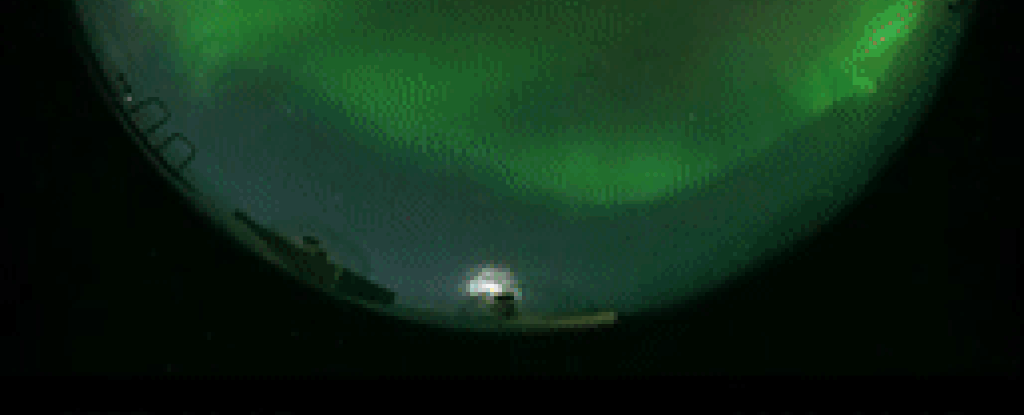Spend long enough in America's frozen north, and you get used to seeing stunning displays of nature high in the sky. Mostly it's in the form of the shimmering curtains of light created as solar winds collide with the upper atmosphere.
To photographer Todd Salat, auroras are worth a patient wait in the cold night air. Yet early Saturday morning, near the city of Delta Junction, he caught sight of a meteorological phenomenon that was quite unlike anything he'd ever seen.
Against a stunning backdrop of rippling green light, a blue spiral blossomed from a bright light on the northern horizon, growing larger as it quickly moved across the sky.
A timelapse of the amazing view can be seen in the clip below, starting at around 1 minute 28 seconds on the video (timestamp of 0950 UT).
"It was a beautiful piece of art in the sky," Salat told Annie Berman from Anchorage Daily News.
Thankfully Salat was prepared, capturing some stunning photographs of the spiral for all of us to appreciate.
As unusual as the sight might have been to Alaskan residents, it's far from the first time a glowing swirl has drawn the attention of beguiled skywatchers. And it has a pretty simple explanation.
A few hours prior to the spiral's appearance, half a continent away at California's Vandenberg Space Force Base, SpaceX launched a Falcon 9 rocket containing dozens of satellites as part of their Transporter-7 mission.
Minutes after launch, the first stage rocket dropped back to the surface and gently landed, available to be reused in future missions.
Meanwhile, the Falcon 9's upper stage continued into orbit where it completed its mission before descending back to Earth in a tumbling spiral.
Venting its leftover fuel in the upper atmosphere, water vapor in the gasses would have frozen into tiny, light-reflecting crystals.
Though we can only really speculate on the cause of this particular glowing whirl, sky spirals have appeared in connection with rocket launches for years, making it a sound bet that Salat snapped a space mission and not an invading cosmic jellyfish.
As stunning as the view is, however, not all enthusiasts of nature's beauty would be keen to see more like it.
Swarms of tiny satellites filling the night sky are becoming an astronomer's nightmare, streaking across star fields and polluting pristine views of the heavens.
With commercial space travel taking off and making orbiting technology cheaper, glowing space spirals are bound to become less mysterious. Meaning we'll be seeing more artworks like this blooming in the sky in the near future.
